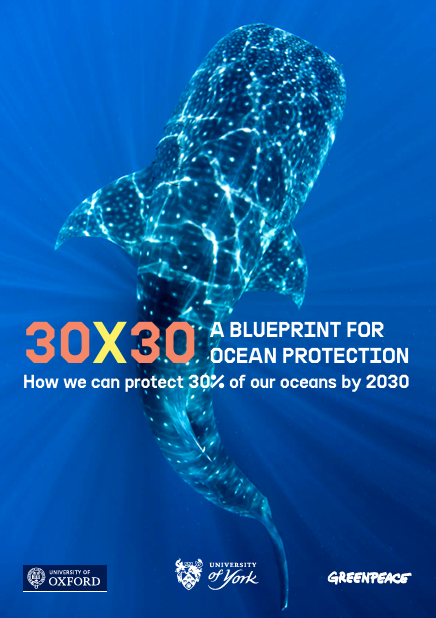The report unveils an innovative strategy to protect 30% of the world’s oceans by 2030. This plan, specifically designed to safeguard marine wildlife and mitigate the impacts of climate change, is the result of a collaboration between leading academics at the University of York, the University of Oxford, and Greenpeace. Most notably, it advocates for creating a global network of ocean sanctuaries.
Furthermore, it suggests dividing international waters into 25,000 squares to map conservation aspects and design protected marine areas. It urgently highlights the need to tackle looming threats like climate change, ocean acidification, overfishing, and pollution. These threats can be effectively managed through a sanctuary network free from harmful human activities.
Moreover, it insists on the need for political support for a UN Global Ocean Treaty, which would facilitate the creation of protected areas. It underscores the current ocean crisis and the urgent need for action to safeguard marine ecosystems for future sustainability.
Key strategies
- Establishing Marine Protected Areas (MPAs): Creating a network of MPAs that are effectively managed and cover at least 30% of each marine habitat is crucial for biodiversity conservation and ecosystem services.
- Increasing Ocean Area under Protection: Urgently increasing the ocean area effectively managed in ecologically representative and well-connected systems of MPAs or other effective conservation measures is essential.
- Limiting Extractive Activities: The ultimate aim is to create a fully sustainable ocean, with at least 30% having no extractive activities.
- Climate Change Mitigation and Resilience: Addressing climate change and ocean acidification by cutting greenhouse gas emissions and establishing highly protected areas can help oceans mitigate and adapt to climate change.
These strategies emphasize the importance of proactive conservation efforts, sustainable management practices, and global cooperation to protect our oceans for future generations.
Part 1: Background
Executive Summary
Gives a brief overview of the crucial points discussed. It offers insight into the extensive research and planning undertaken to protect marine environments. It emphasizes the need for a strategic and inclusive conservation approach.
- Composite Approach to Network Design: Underscores a composite network design for marine protected areas, noting that notable wildlife hotspots like the Costa Rica Dome and the White Shark Café in the Eastern Pacific aren’t always included in network examples from analyses.
- The Study: A conservation plan was developed by scientists, led by the University of York, to guide discussions on creating a high seas marine protected area network. The technical section of the report elaborates on the research.
Towards protection
Outlines strategies for safeguarding marine environments through various initiatives. It highlights the importance of international cooperation, scientific research, and policy frameworks in advancing marine conservation. The goal is to protect 30% of the world’s oceans by 2030.
- Roadmap to Recovery: The Roadmap to Recovery, a project by Greenpeace International and York University scientists, identifies potential areas for a global network of marine reserves in international waters. It was launched at the 8th Convention on Biological Diversity in Brazil in 2006.
- Global Ocean Treaty: The Global Ocean Treaty aims to protect high seas biodiversity by establishing a legally binding instrument for marine protection in areas beyond national jurisdiction, promoting the ‘Half-Earth’ proposal.
- Marine Reserves and MPAs: The section promotes marine reserves and MPAs for sustainable fishing, coastal protection, and carbon storage. It stresses their role in preserving biodiversity and ecosystem services.
- Ecologically Significant Areas: Discusses identifying Ecologically and Biologically Significant Areas (EBSAs) in the high seas and other assessments for conservation priorities and protection efforts.
Life on the High Seas
Delves into the diverse ecosystems and habitats in the open ocean beyond national jurisdictions.
- Seafloor/Benthic Habitats: Underlines the misconception that the deep seabed was considered lifeless. Yet, ongoing deep-sea research unveils the abundance and complexity of seafloor and benthic habitats, debunking earlier beliefs.
- Ocean Zones: Offers a summary of ocean zones, including the epipelagic, mesopelagic, bathypelagic, and benthic habitats like the continental slope, submarine canyons, abyssal plains, and mid-ocean ridge systems.
- Ecosystem Services: Highlights the vital ecosystem services of high seas environments, including natural carbon sinks essential for climate regulation. Understanding and protecting these services are key to maintaining marine ecosystem health and balance.
- Ocean Exploration: Emphasizes advancements in ocean exploration, enhancing our understanding of high seas areas’ biodiversity and ecological importance. Continued research is vital to unravel the mysteries of these delicate marine environments.
Ecosystem services
Stresses the vital role of marine ecosystems in offering various services that benefit humans and the environment. Overall, this section highlights the linkage between marine ecosystems and human well-being, underscoring the necessity of conservation efforts to protect these services for present and future generations.
- Definition of Ecosystem Services: Ecosystem services provide direct or indirect benefits to humans, are vital for maintaining healthy ecosystems, and are supported by their resident organisms.
- High Seas Ecosystem Services: Outlines high-seas ecosystem services, including provisioning services like seafood, raw materials, and medicinal resources. It emphasizes their economic and social value, underscoring the need for conservation.
- Importance of Ecosystem Services: Understanding the ecosystem services of high seas is vital as they support biodiversity, regulate climate, and sustain marine life, thus benefiting both marine species and humans.
- Conservation and Management: Underlines the necessity of safeguarding and sustainably managing high sea ecosystems to maintain ecosystem services. Measures like Marine Protected Areas (MPAs) and sustainable fishing practices are crucial for preserving these services.
Present status of threats on the high seas
Addresses high-seas ecosystems’ challenges and risks due to human activities and environmental changes. Specifically, the “Present Status of Threats on the High Seas” section underscores the urgent need for conservation and management measures. These measures aim to tackle the threats to high-seas ecosystems and safeguard marine biodiversity for future generations.
- Threats Overview: Highlights threats to high seas ecosystems such as fishing, seabed mining, bioprospecting, climate change, pollution, and geoengineering, all posing serious risks to marine biodiversity and health.
- Fishing on the High Seas: Accentuates the impacts of fishing activities on high-seas biodiversity, including overfishing, bycatch of non-target species, and habitat destruction. Unsustainable fishing practices can lead to the depletion of fish populations and disrupt marine ecosystems.
- Deep Seabed Mining: Discusses the emerging threat of deep seabed mining, which can harm deep-sea habitats and species. The extraction of minerals from the seabed can result in habitat destruction, sediment plumes, and disturbances to fragile ecosystems.
- Climate Change: Climate change causes ocean warming, acidification, sea level rise, and biodiversity changes, significantly impacting high-sea ecosystems and affecting ice-dependent species, fish populations, oxygen levels, and ocean chemistry.
- Pollutants and Marine Debris: Manages the issues of pollutants, oil pollution, shipping impacts, marine debris, and ocean plastics in high-seas environments. These pollutants can harm marine life, degrade habitats, and threaten ecosystem health and biodiversity.
Ocean sanctuaries – A key tool in securing ocean health
Highlights the need for marine protected areas and ocean sanctuaries to protect biodiversity and ecosystem health. The “Ocean Sanctuaries – A Key Tool in Securing Ocean Health” section emphasizes their importance for biodiversity conservation and sustainable ocean health.
- Importance of Marine Reserves: The section spotlights the importance of fully protected marine reserves in providing superior ecological benefits by fostering species growth and ecosystem recovery and limiting extractive activities and human pressures.
- Ecological Benefits: Scientific studies consistently indicate that marine reserves enhance the recovery of marine species’ abundance, biomass, and diversity. The significantly higher fish biomass within these reserves compared to unprotected areas underscores their positive impact on ecosystem health.
- Conservation Success: Marine reserves successfully enhance biodiversity, protect habitats, and support sustainable fisheries. They maintain healthy ecosystems and ensure the sustainability of marine resources by preserving areas from exploitation and degradation.
- Climate Change Mitigation: Ocean sanctuaries aid in climate change mitigation, resilience, and biodiversity conservation. Highly protected areas can adapt to and reduce the impacts of climate change and ocean acidification, addressing the causes and effects of environmental degradation.
Part 2: Designing a Marine Protected Area Network for the High Seas
Outlines the strategic planning for a Marine Protected Areas (MPAs) network, emphasizing collaborative research, conservation planning, and policy engagement for effective high seas protection. The MPA network supports sustainable ocean governance and biodiversity conservation by integrating scientific knowledge and stakeholder input.
- Research Objective: Explores high-seas protection options via MPAs to guide negotiations for high-seas biodiversity safeguards. A comprehensive conservation plan for high-seas MPAs is developed, incorporating biological, oceanographic, geographical, and socio-economic data.
- Collaborative Efforts: Emphazises multidisciplinary collaboration in designing a high-seas MPA network. It aims to address conservation challenges and enhance the governance of international waters through cooperation among researchers, policymakers, and stakeholders.
- Conservation Planning: Systematic conservation planning involves identifying priority areas based on ecological significance, species diversity, and habitat integrity. Strategically designated MPAs in high seas regions aim to enhance conservation, resilience, and sustainable resources.
- Policy Implications: Informs policy for a Global Ocean Treaty and high seas conservation governance. It supports international high-seas biodiversity protection and ecosystem services, offering scientific evidence and recommendations for MPA design and management.
Therefore. Furthermore. Nonetheless. Nevertheless. Moreover. Therefore. Furthermore. Nonetheless. Nevertheless. Moreover. Therefore. Furthermore. Nonetheless. Nevertheless. Moreover.




